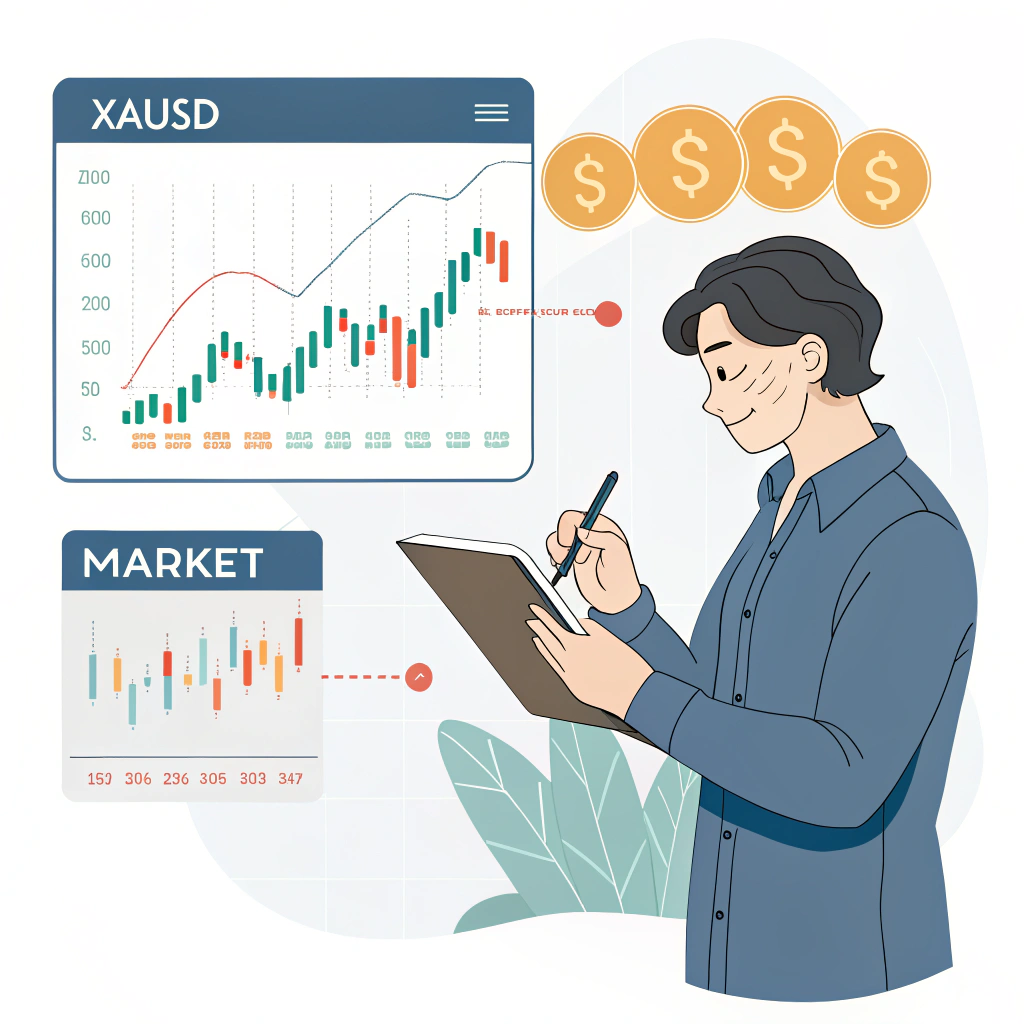Gold is captivating. It’s been a symbol of wealth for centuries, a hedge in times of crisis, and a favorite playground for traders who thrive on fast price action. But let’s be honest—trading XAUUSD (gold vs. US dollar) can be exhilarating and brutal. One wrong move, and gold’s notorious volatility can eat into your account faster than you can hit “close trade.” This guide breaks down how to navigate the chaos and trade gold with confidence and control.
Understanding XAUUSD and Gold Volatility
What is XAUUSD and how is it different from physical gold?
In forex parlance, XAUUSD is the quotation for gold against the US dollar. XAUUSD is a method of trading one type of gold against another in a liquid market. As opposed to physical gold, which can be kept in any vault or safe, this specific form of gold is traded through many channels like MetaTrader or TradingView as CFDs, futures, or spot contracts. Here you can buy or sell with leverage and trade gold without actually touching any gold bars.

Why is gold so volatile?
Few assets react like gold. As both a commodity and a monetary instrument, it responds to all sorts of stimuli: inflation fears, moves by central banks, geopolitical tensions, and perhaps even a tweeted message that roils investor confidence. When fear grips the markets, capital flows into gold on safe-haven instincts. In contrast, when calm returns, gold quickly loses its luster.
Key reasons traders are drawn to XAUUSD
Gold might be unpredictable, but it’s also irresistibly tradeable. Here’s why:
- High liquidity – Quick entries and exits with tight spreads.
- Volatility – Big intraday moves offer plenty of setups.
- Crisis resilience – Gold often shines in turmoil.
- Respect for technicals – Price action and chart patterns tend to work well.
Core Factors Driving XAUUSD Volatility
Global economic data and interest rates
Economic indicators—like Non-Farm Payrolls, CPI, and GDP—can move gold dramatically. Why? Because they affect expectations around interest rates. Higher rates = stronger dollar = weaker gold. It’s that simple… most of the time.
Inflation and central bank policy
Gold is often viewed as a hedge against inflation. When inflation rises faster than central banks can tighten, gold tends to rally. But once rate hikes come into play, yields rise—and non-yielding assets like gold start to lose their shine.
Geopolitical events and market sentiment
Think wars, elections, pandemics, or banking collapses. When fear spikes, gold benefits. It’s the go-to safety play. But these rallies can be short-lived if sentiment quickly shifts back to risk-on mode.
USD strength and inverse correlation with gold
Since gold is priced in dollars, the relationship is often inverse. A surging dollar puts pressure on gold prices, and a weakening dollar lifts them. The DXY index is a great tool to track this correlation.
Proven Strategies to Trade XAUUSD Safely
1. Use moving average crossover to spot entries
When the 50 EMA crosses above the 200 EMA, it often signals the start of an uptrend. This crossover strategy filters out noise and helps identify higher-probability setups, especially on H4 and D1 timeframes.
2. Monitor real interest rate trends
Gold has a deep relationship with real (inflation-adjusted) interest rates. When real rates fall below zero, gold often rallies. Watch tools (MT4 MT5) like TIPS yields or inflation expectations to gain an edge.
3. Apply Fibonacci retracements for key levels
Gold loves Fibonacci levels. After a strong move, retracement levels like 38.2%, 50%, and 61.8% often serve as bounce or reversal points. Combine this with price action for extra confirmation.
4. Trade support and resistance zones
Gold often respects well-established horizontal levels. Look for rejection wicks, consolidation zones, or previous highs and lows as key zones to buy or sell from.
5. Place stop-losses wisely to avoid large drawdowns
Don’t place stops too tight in a volatile market. Use recent swing highs/lows and consider using ATR to determine a logical distance based on current volatility.
Gold Risk Management Essentials
Position sizing and leverage control
No matter how good your setup looks, never risk too much on one trade. Keep your risk per trade between 1% and 2% of your account size. In a market like gold, leverage can work for you or against you—so use it wisely.
Using volatility indicators like ATR
The Average True Range (ATR) gives you a real-time feel for gold’s price range. Use it to set dynamic stop-loss and take-profit levels that adapt to market conditions.
Risk-reward ratio and profit targeting
Aim for at least a 1:2 risk-reward ratio. This means if you risk $100, you’re looking to make $200. It’s a simple formula, but sticking to it helps you stay profitable even with a win rate below 50%.
Hedging XAUUSD exposure with correlated assets
Hedging can help balance risk. For example, if you’re long gold and fear a pullback, you might hedge with a long position in USD or even silver, depending on correlation dynamics.
Best Tools and Indicators for XAUUSD Trading
| Indicator | What It Does | Why Use It |
| CCI | Identifies overbought/oversold conditions | Helps time entries in ranging markets |
| Bollinger Bands | Measures volatility and price extremes | Great for spotting breakout potential |
| ADX | Confirms trend strength | Filters out weak or choppy markets |
| Volume | Validates moves | High volume = strong conviction behind price action |
Practical Tips for Trading Gold Without Getting Burned
Stick to your trading plan
Create a plan. Write it down. Stick to it. Gold will test your patience and your nerves—especially during high-impact news events. Without a plan, you’re just gambling.
Avoid emotional decisions in high volatility
Volatility is exciting, but it’s also dangerous. Don’t chase price. Don’t revenge trade. When in doubt, sit it out.
Analyze multiple timeframes
Start with higher timeframes to define the trend, then zoom in to lower ones for entries. This top-down approach keeps you aligned with the bigger picture.
Stay updated on macro news
Economic calendars and financial news feeds should be your daily habit. XAUUSD reacts instantly to data surprises—being informed can give you a critical edge.
Keep a trading journal for performance review
Log your trades, thoughts, and results. A journal helps identify what’s working and where you’re making repeat mistakes. It’s one of the most underrated tools of successful traders.
Pros and Cons of Trading XAUUSD
Pros
- High liquidity for easy execution
- Volatility creates frequent trade setups
- Safe-haven status boosts gold in uncertain times
- Respects technicals, great for chart traders
Cons
- Sharp, sudden reversals can hit stops fast
- Sensitive to global news, requiring constant attention
- Complex drivers, from inflation to central bank policies
- Leverage risk is magnified with gold’s big moves
Final Thoughts: Mastering XAUUSD Without Losing Your Nerve
Trading gold is not for the faint-hearted—but with the right knowledge, strategy, and risk control, it can be one of the most rewarding assets in your portfolio. Respect its volatility, understand its drivers, and remain disciplined. In gold trading, survival isn’t about predicting every move—it’s about managing risk, staying consistent, and never letting one trade wreck your account.

